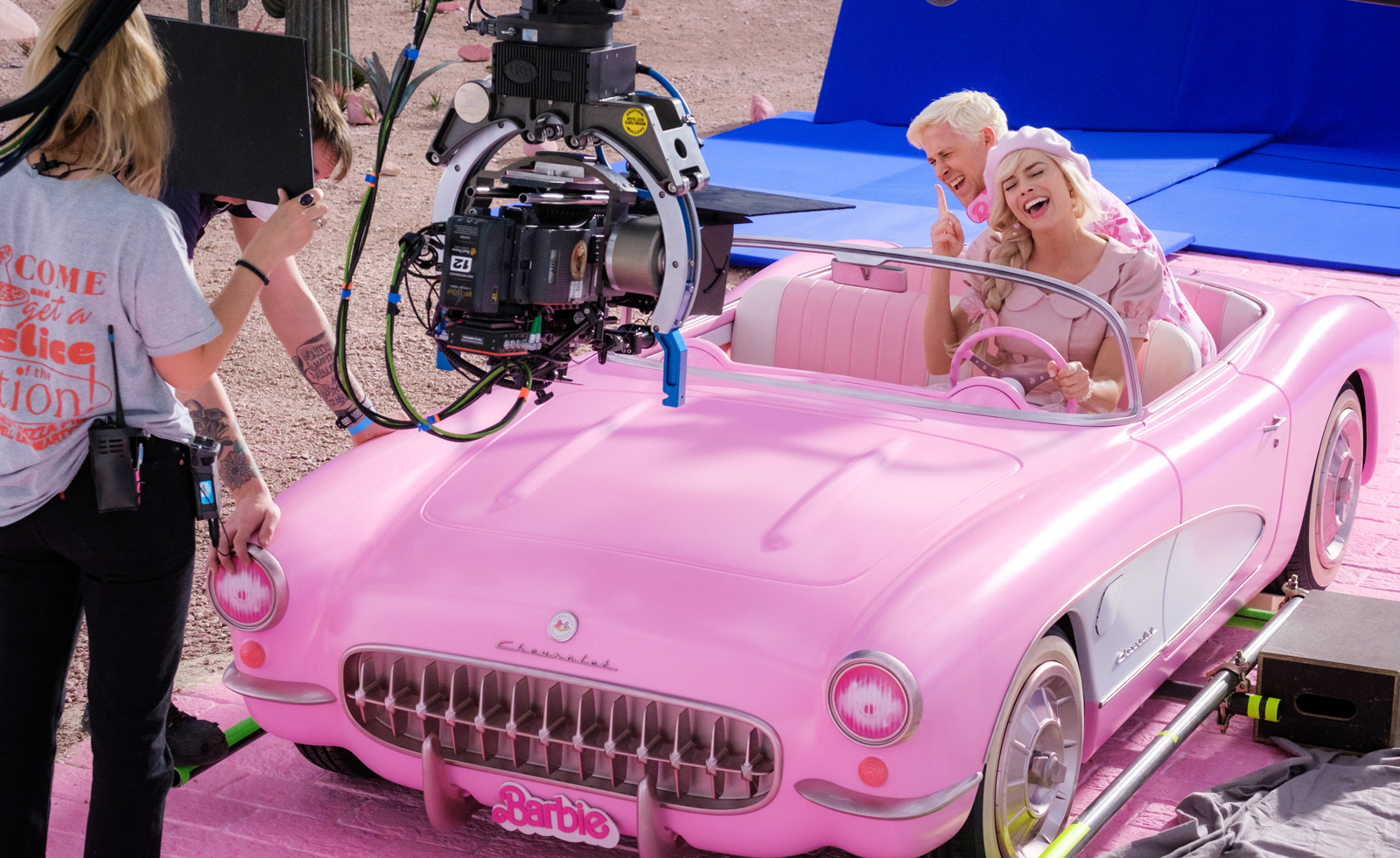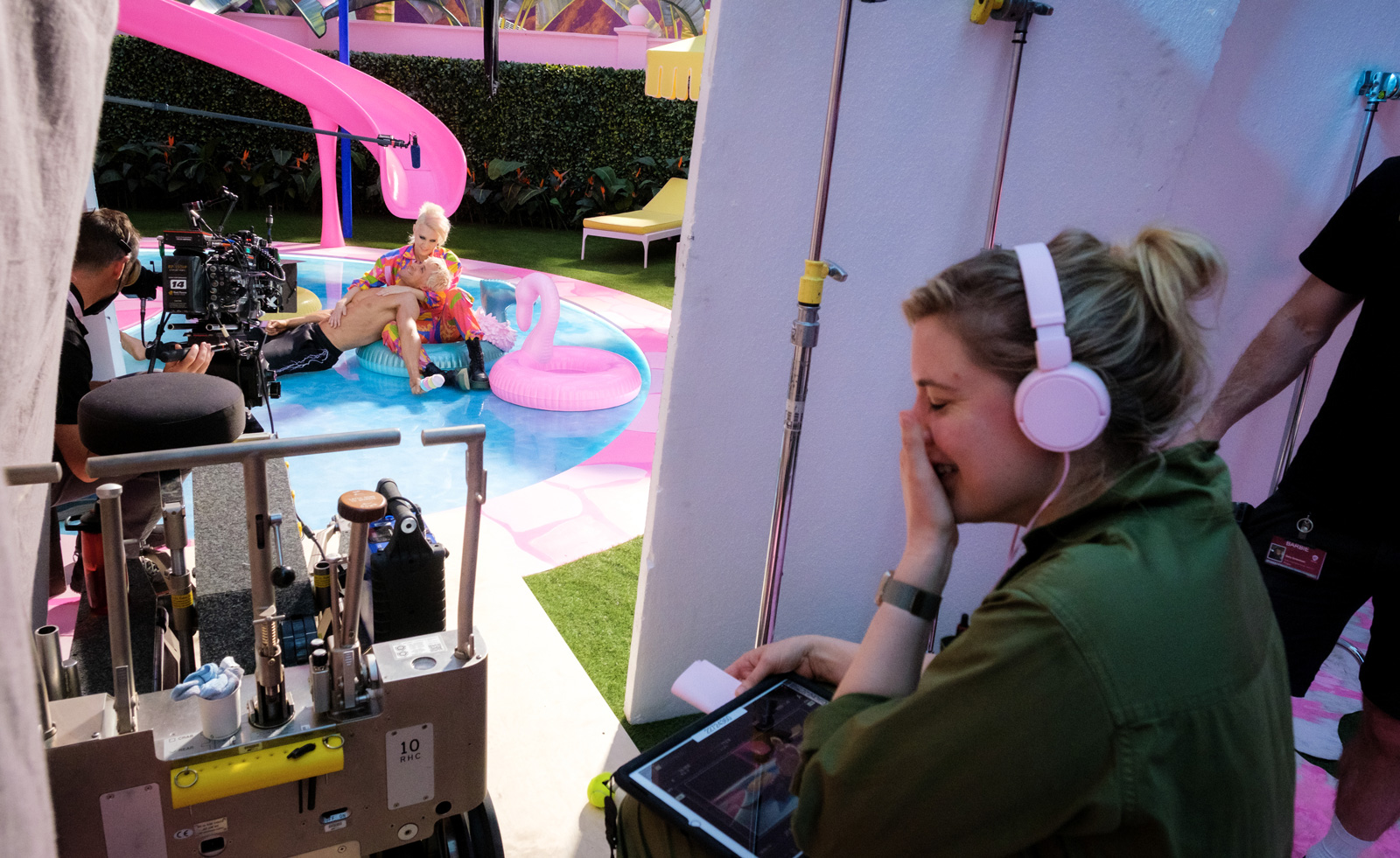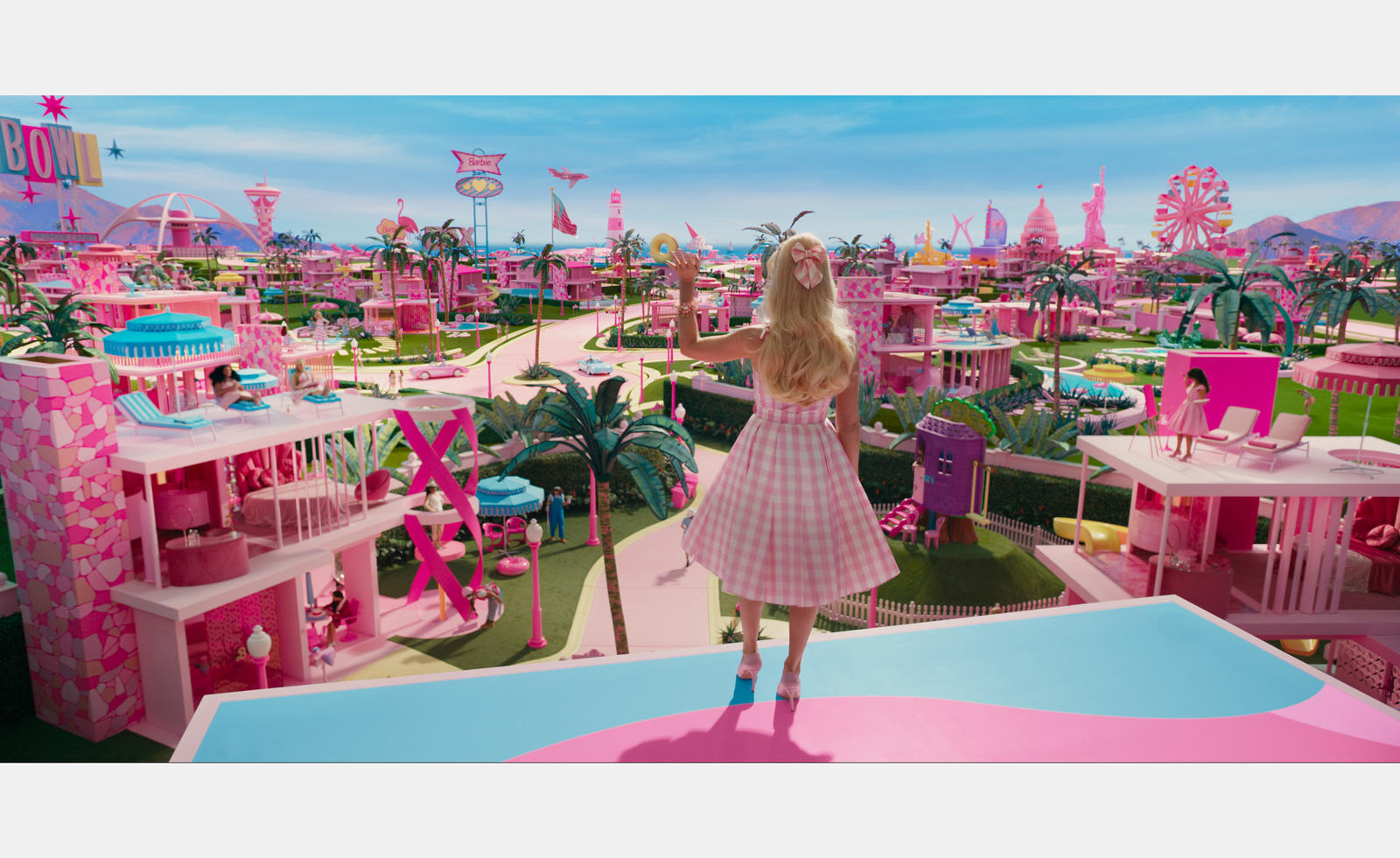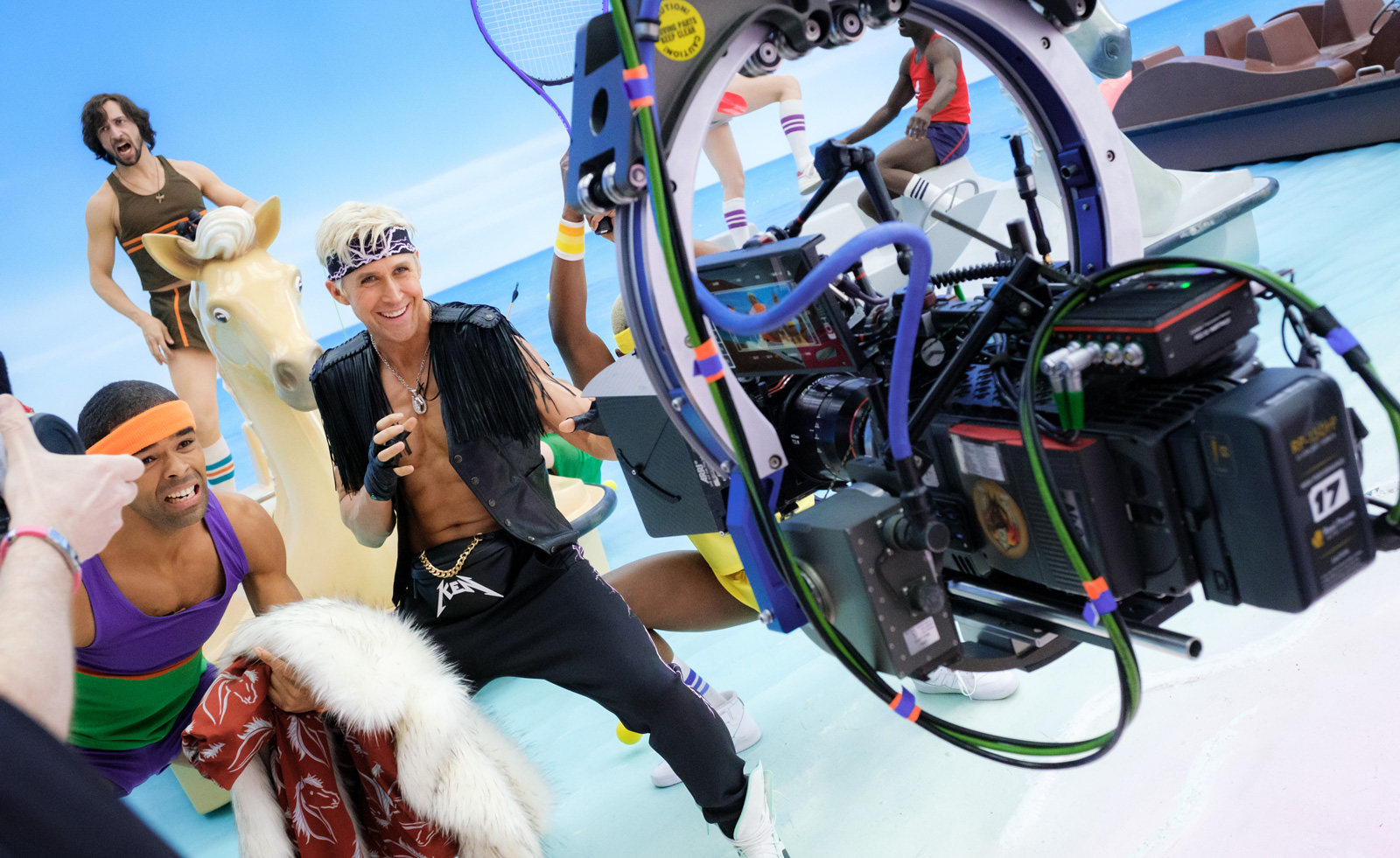
‘If you're building a world, it doesn't matter if it's Georgian or if it’s Barbie - you just dive in,’ says Barbie set decorator Katie Spencer, who created Barbie’s universe together with production designer Sarah Greenwood. ‘It doesn't matter if you know the subject matter massively beforehand. Just learn it, and understand it's all about the character and about the storyteller.’
The duo, who have previously created female spaces in Pride & Prejudice, Anna Karenina and Atonement, turn their gaze to a hyper feminised world for the first time with Barbie. ‘We worked with things that we'd never worked with before,’ Spencer adds. ‘Those colours - pink, blue, green - were so out of our normal work world. Then, I'm working with the plasticized and the soft edges, and with the finishes there’s no patina, no layering - that was a journey in itself.’

‘There’s nowhere to hide in Barbie land - her house has no walls,’ says Greenwood. ‘And there's nowhere to hide for the design. Everything has to stand and be good for, be it a colour, be it an object, or be it not there. Because the absence of things in Barbie land is as important as what's in there. It's not a multi-layered thing. Everything you put in there has a rationale. It's the trickiest thing, I think.’
Working in a metaphysical reality also proved to be challenging: ‘Technically there's no air, there's no water, there's no electricity!’ Greenwood says. ‘And yet she has all those things.’

‘You're dealing with toys,’ Spencer points out. ‘How do you get into that space that is a toy? How do you make it a toy? What makes it a toy? You know, we knew from the outset, very early conversations with Greta [Gerwig, Barbie writer and director] that we weren't doing jointed dolls, or playing in that weird uncanny valley way. It's all real, but there's certain things about it. Greta is so brilliant because when she describes something she'll act it. She plays it brilliantly. So she’ll say ‘Okay, so here we've got a doll, she’s going upstairs.’ Well, of course they don't walk upstairs. We don't have stairs. She goes from the top of the house and that's what she does, then she wants to get into her car so she flies down into the car. Of course - I never had a Barbie - but they never quite fit right.
‘We brought a Barbie dream house into the office and played with it. When you put Barbie’s hand up, she touched the ceiling. Then, one step and she's on the back wall. So we're playing with the toy scale. We reduced everything in the house, and everything's 23% smaller which makes the actor look bigger in the space, which ironically makes the whole thing look more toy.’

They approached the ubiquitous pink with the same consideration, examining 100 pink swatches while avoiding the distinctive bubblegum Mattel pink. ‘We weren't replicating Mattel in any sense. We didn’t use their colours at all. We created our own palette and our own design. It's a homage to Mattel, throughout the period of 70 years. It's kind of a refinement to make it work for our story, as opposed to a replication of a Mattel dream. For us, we come up with the story point. It is totally about the story.’







